It’s officially hurricane season — and yes, we’re still in a pandemic.
The six-month hurricane season, which officially started June 1, is predicted to have an above-average number of storms. That adds a layer of complexity and danger to the coronavirus outbreak, with all its social distancing and hygiene rules.
Local and federal agencies as well as emergency experts have released new guidelines and shared tips on how to prepare for this year’s storm season ― from stockpiling additional supplies to determining what you should do if you are sick and forced to evacuate.
Here’s how to prepare and what to expect:
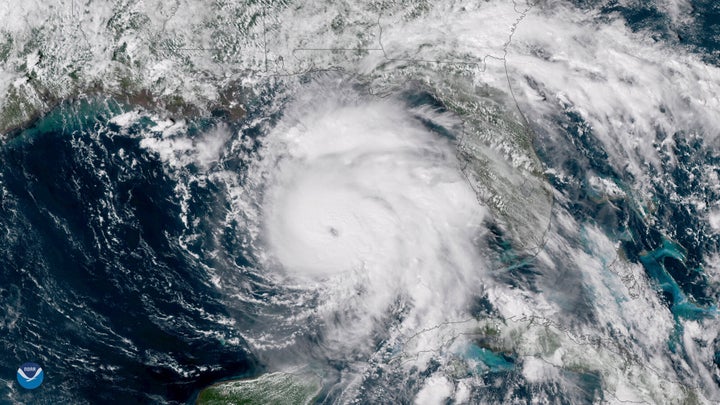
Before a storm
Gather supplies: Health and safety officials advise giving yourself more time than usual this year to stock up on sheltering essentials, especially if home delivery is your primary source for these items.
Each person and pet should have three to seven days’ worth of food and water (about a gallon per day), as well as any needed medical and cleaning supplies, according to the Centers for Disease Control and Prevention. A list of recommended supply items can be found here.
A “go kit” should also be prepared to take during an emergency. This kit would include any items that you cannot go without, such as medication ― ideally a month’s supply. Because of the coronavirus outbreak, include two cloth face coverings per person, and cleaning supplies such as hand sanitizer or soap and sanitizing wipes if available, the CDC and the Federal Emergency Management Agency advise.
“Have a bag for each member of your family, including pets,” Michelle Belles, director of emergency disaster services for the Salvation Army, a nonprofit that assisted FEMA’s guidance task force for this hurricane season, told HuffPost.

Don’t forget the animals: The CDC’s website offers guidance on how to prepare a disaster kit for a pet, as well as resources on how to locate a pet-friendly hotel or shelter if having to evacuate.
In addition to gathering vet information and several days’ worth of food, water, and medication, pet owners should ensure their pet is microchipped and has a collar and tags with up-to-date contact information in case of separation.
Register for alerts: Determine how you will receive warnings and alerts from local government and weather officials. Most phones will provide automatic alerts through the Emergency Alert System, though additional sources of information should be prepared, according to FEMA. These could include using a weather radio, Twitter, or smartphone apps, like the Red Cross emergency app that provides local weather alerts.
Anyone with special needs who may need assistance before a storm can register with their state’s emergency management department to receive information and direction.
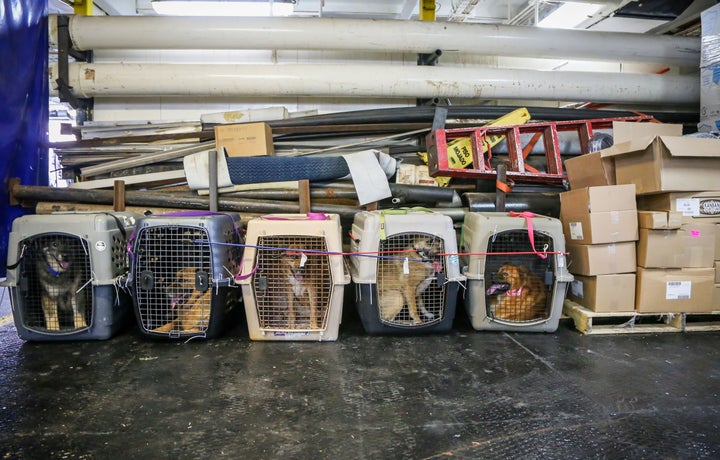
Have a plan: Know your evacuation zone and your designated shelter, which may have changed this year. Some cities are creating more shelters to allow for social distancing.
Officials advise that you only report to a shelter as a last resort ― if you live in a mandatory evacuation zone and are unable to shelter at home or stay with out-of-town family or friends. Public evacuation shelters may have limited space due to COVID-19 and may not be the safest choice for you and your family, according to FEMA’s pandemic guide for the 2020 hurricane season.
It’s also important to follow local officials’ instructions on when to evacuate and when not to so that evacuation routes are not jammed, advised Brian Mason, Houston’s Public Works Emergency Manager, who blamed traffic snarls during 2005′s Hurricane Rita for evacuation difficulties.
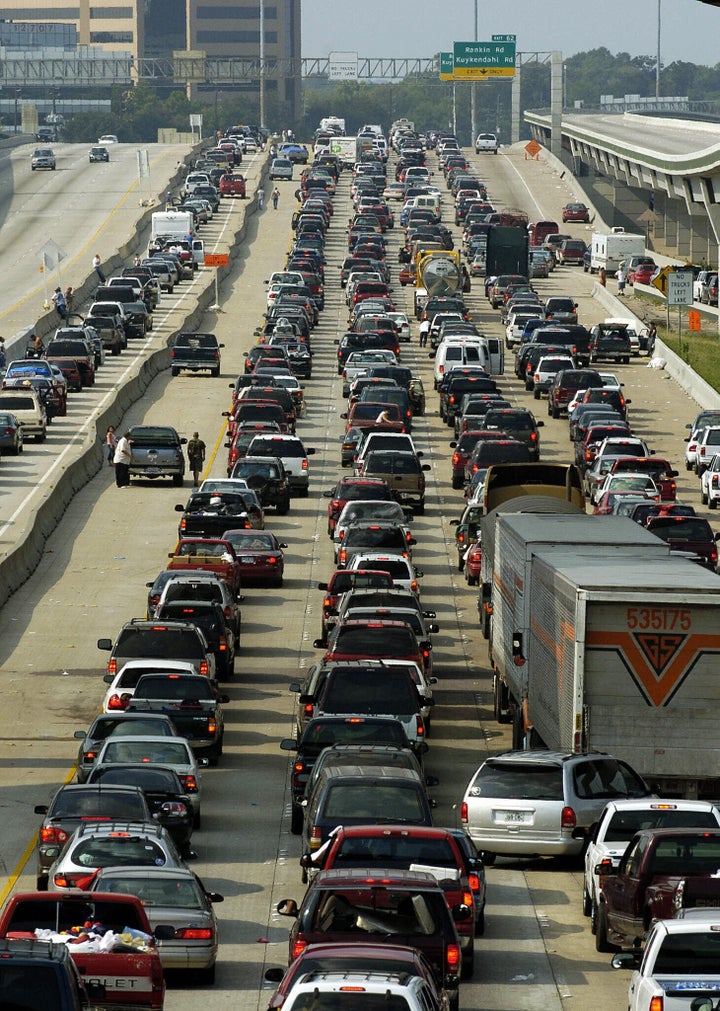
“As hard as it is to hold off and wait, if possible, please try to follow the directions of city leadership so we can get everyone out safely and in a timely manner,” Mason said during a May public forum on Houston’s 2020 hurricane-pandemic response.
During a storm
What to expect at shelters: Some shelters will require evacuees to wear a face covering and to stay at least six feet from others. Upon arrival, evacuees may have their temperature taken and staff may check them for a cough and shortness of breath, as per CDC and FEMA guidelines.
If you have COVID-19 or its symptoms: Anyone who is sick is advised to contact their health care provider for further instructions and to shelter in place if possible. If this is not possible and you need to stay at a shelter or public facility, alert shelter staff immediately so they can call a local hospital or clinic. If possible, put on a cloth face covering before being physically assisted, FEMA advises.
“In the event that someone is showing a fever or sick, we are separating them immediately,” said George T. Buenik, director of the Houston mayor’s Office of Public Safety and Homeland Security at his city’s public forum on hurricane safety. “We have different places where we can shelter people that we suspect may be COVID positive or have tested positive.”
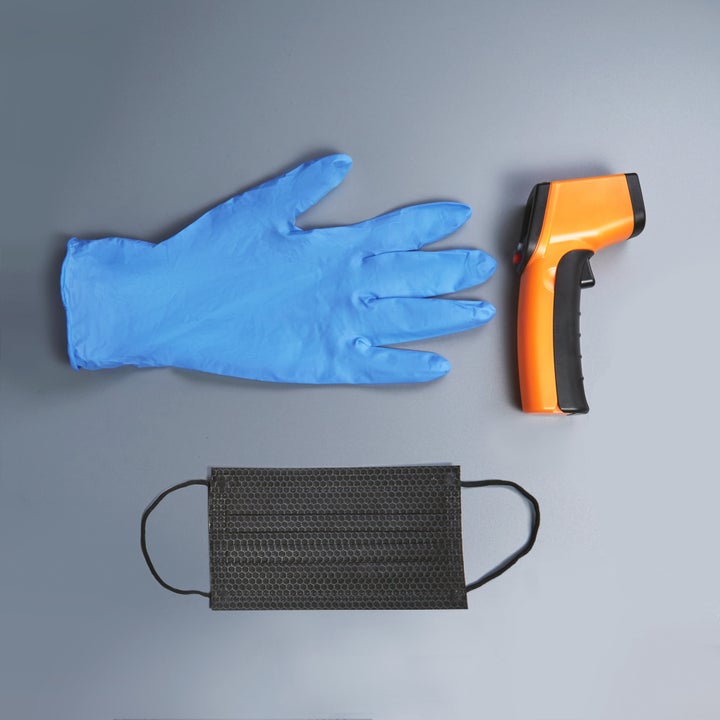
Other shelter options: Noncongregate shelters like hotels and dormitories would be another option for people who need to be isolated. If a national disaster is declared, local governments would be eligible for financial support for these locations, according to FEMA.
“We’re prioritizing individual hotel rooms or dormitory-style rooms to make sure people have a safe place to stay if they can’t return home after a disaster,” Trevor Riggen, senior vice president of Disaster Services for the American Red Cross, told HuffPost.
If hotels and dormitories are not an option, but additional space is needed by local officials, Riggen said emergency shelters would be erected. These shelters would feature additional safety precautions due to the virus.
“In these cases, we will work with local public health authorities to set up a health screening process for everyone coming into the shelter, provide masks, add additional space between cots, and use enhanced cleaning and disinfecting practices,” Riggen said.
Food distribution sites will also have new social distancing rules, according to Belles.
“In some locations, we are adapting our feeding model by providing shelf-stable meals alongside prepared food, so we can increase the amount of meals that survivors receive while limiting contact,” she said.
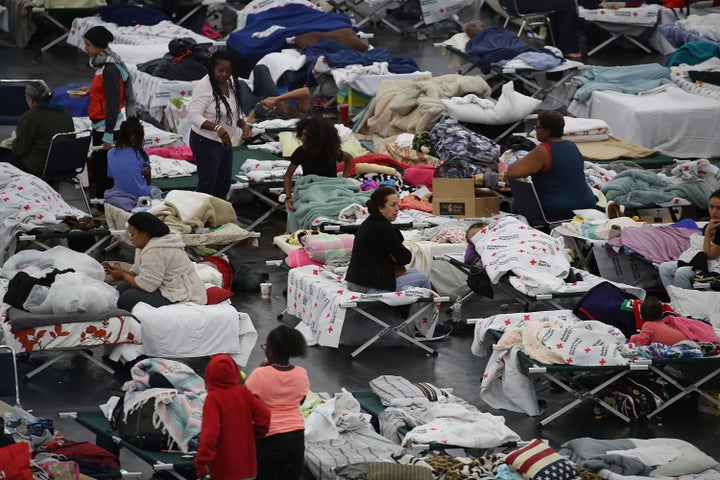
In emergencies, physical distance is no guarantee: First responders will try to limit virus transmission whenever possible, but if there is an immediate situation involving life or death, there may not be extra masks, hand sanitizer or physical distancing, said Houston Fire Chief Samuel Peña.
“We’re going to consider what can kill us right now,” he said during the city’s public safety forum “Although the concern of transmission of this virus is present with us, if we get to [a rescue] situation, that’s going to be secondary. The primary focus is going to be to evacuate, to remove that individual or individuals from that risk ― that immediate risk that’s detrimental to their safety ― and then when we have the ability, we will consider” social distancing.
How you can help
Donations and volunteers are always needed and don’t necessarily require you to leave home.
Red Cross volunteer opportunities include donating blood and delivering services to communities. There are work-from-home opportunities as well. Learn more here.
The Salvation Army asks do-gooders to consider a financial donation, as this is often the most efficient way to respond to demand. More information can be found here.
- Stay up to date with our live blog as we cover the COVID-19 pandemic
- 7 essential pieces of relationship advice for couples in quarantine
- What you need to know about face masks right now
- How to tell if you need to start doing online therapy
- Lost your job due to coronavirus? Here’s what you need to know.
- Parenting during the coronavirus crisis?
- The HuffPost guide to working from home
- What coronavirus questions are on your mind right now? We want to help you find answers.
- Everyone deserves accurate information about COVID-19. Support journalism without a paywall — and keep it free for everyone — by becoming a HuffPost member today.